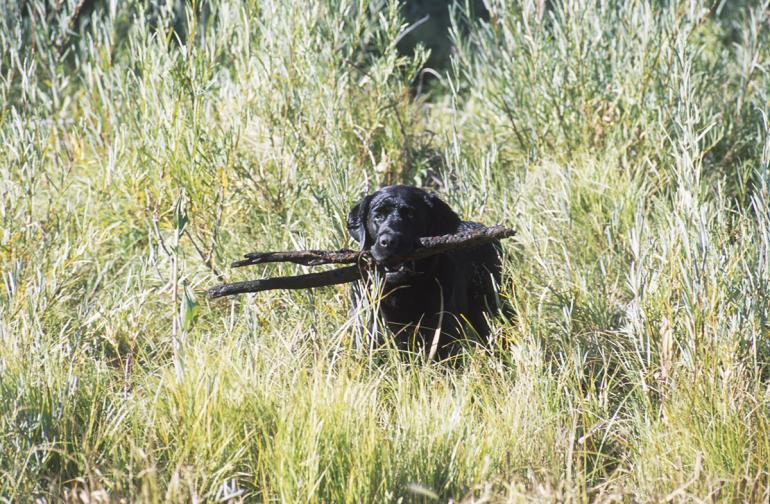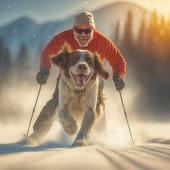Lockup
Keep your pup safe during trapping season.
Fall is one of my favorite times to get outside with my dog. There are no mosquitoes, ticks, or flies to drive her crazy; the risk of heat exhaustion is virtually nil; and we both like to get muddy. But we are aware that it's hunting season, and so we take precautions to avoid disturbing hunters, or being disturbed by them. We are also aware that many wild animals are breeding during this time and disruption from an inquisitive dog is unwanted.
There is, however, a risk to our canine friends during the fall and winter that takes most dog owners by complete surprise: fur-bearer trapping on public and private lands. Most trappers are highly skilled and leave no trace of their activities; this minimizes the risk of conflict with pets. They set their traps in a way that makes it impossible for a dog to get caught; they also choose areas most recreationists avoid.
In spite of this though, a few dogs in Montana die every year after being inadvertently caught in traps. Regardless of your opinion on trapping, if you recreate with your dog on public lands in the fall or winter, you need to be aware of a few things:
- Trapping is permitted only during certain months on these lands. Trappers are not required, and generally do not, post the areas they are using.
- Bait is used to entice the fur-bearers; dogs will be attracted to this too. Keep your dog in sight and under voice control. We hear this often and tend to ignore it, but in this situation it could be the difference between life and death for your dog.
- If your dog does get caught, you’ll see it because you’ve got him in sight (see #2), and you’ll know how to release the trap because you’ve studied the information from Montana Fish, Wildlife & Parks about releasing traps.
- You need to carry a multipurpose tool with pliers and a saw (a Leatherman, for example) and a sturdy belt or strap in order to release traps. These are things you should have anyway when heading out in to the woods.
Liz Layne practices small-animal medicine at Creekside Veterinary Hospital on Blackwood Road. She recommends Field First Aid for Dogs, by Randy Acker, DVM as further reference. For instructions on how to release snares and connibear traps, visit fwp.mt.gov/hunt/regulations/furbearer-trapping.
Don't Shoot Spot
by Dave Carty
Practical tips to keep your pup out of the line of fire.
A friend of mine spent years guiding grouse hunters in Wisconsin; he finally quit because, among other reasons, he couldn’t take the stress of clients shooting holes in the air around his dogs. Sooner or later, he reckoned, one of those holes would be in one of his dogs.
Keeping your bird dog safe takes common sense (you) and training (the dog). Here are the do’s and don’ts. In a fit of literary license, I’ve decided to call them Carty’s Rules.
- When a pheasant flushes, does your dog break and chase it over the horizon? Of course he does. But that’s dangerous. Train him to be steady to flush and he won’t be in the line of fire when you shoot.
- Train him to come when he’s called—every time. If you know where he is, you won’t shoot in his direction.
- Never ever walk in on a dog with your safety off. I know you think you won’t trip or accidentally misfire, but how can I put this delicately: you’re wrong. I’ve seen it happen.
- Point the barrel of your gun away from your dog when accepting a retrieved bird. Better yet, break the action.
- Always break the action or unload your gun when laying it on the ground. Dogs step on exposed triggers all the time. Your pup may be okay, but he could shoot your foot off. And a missing foot is something you’ll notice.













